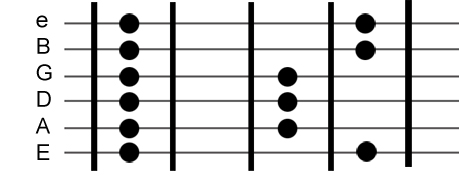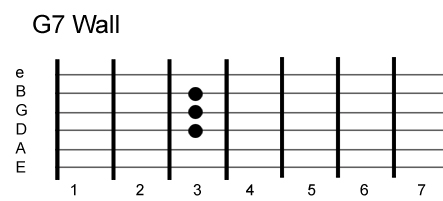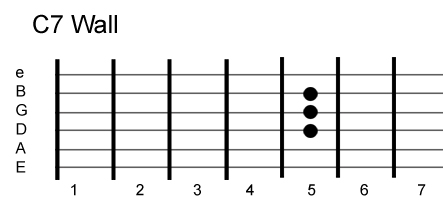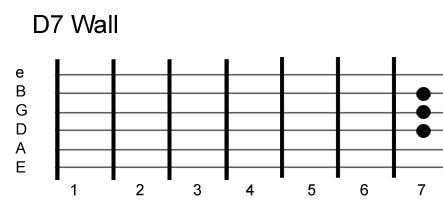Let’s face it—the blues are weird. Your standard 12 bar blues contains three major chords and yet the main scale we use to play over the blues is the minor pentatonic. A minor scale over major chords… a bit strange, no? But that’s part of what gives the blues its unique sound.
Ideally, listeners of a 12 bar blues should be able to hear the chords of the song simply by listening to the solo. For example, even if the backing music drops out, listeners should be able to perceive the chord changes. It can be challenging to use the minor pentatonic scale to convey the sound of the chords. Today I want to present a visual trick that will help you do this.
First, let’s set up our example. We’ll be playing a G maj blues and using the standard minor pentatonic shape built off the third fret. This is the classic minor pentatonic shape everyone learns early on in blues playing

Our 12 bar pattern looks like
| G7 | C7 | G7 | G7 |
| C7 | C7 | G7 | G7 |
| D7 | C7 | G7 | D7 |
Now I want to present the idea of “the walls.” The walls are just collection of three notes that can easily be found on the guitar because they are visually stacked on top of each other. I will diagram one wall for each chord in the blues progression. How they are used is explained in a moment.



The walls act a target notes for which you can “aim for” when playing over a blues progression.
The secret to the walls is that they contain notes that fit nicely over the chord for which they represent. The wall for the G7 chord contains the 7th, minor 3rd and 5th of the chord. (Even though the minor third isn’t in the G7 chord, part of the blues is this “minor over major” sound, as I mentioned above.) The wall for the C7 chord contains the 5th, the 1st and the 3rd of the chord. So does the wall for the D7 chord.
Use the minor pentatonic scale to generate licks and then end those licks on notes in the wall appropriate for the chord you’re on. You’ll find the licks (almost always) feel like they end correctly; they “settle” into the music.
In addition to ending your licks on wall notes, try just focusing on notes in the walls in your licks. For example, if you play a lick with 8 notes, use wall notes for 3-4 of those notes.
This might seems a bit challenging and academic at first, but your goal is to integrate these ideas into your playing subconsciously so that you do them without really thinking about it.
You may observe that some of the notes in the walls are not found in the pentatonic scale. This is no problem. Much of blues playing involves notes outside the pentatonic scale and this is a good introduction to that premise.
Excellent. This is superb. Thank you.
Thank you, sir!